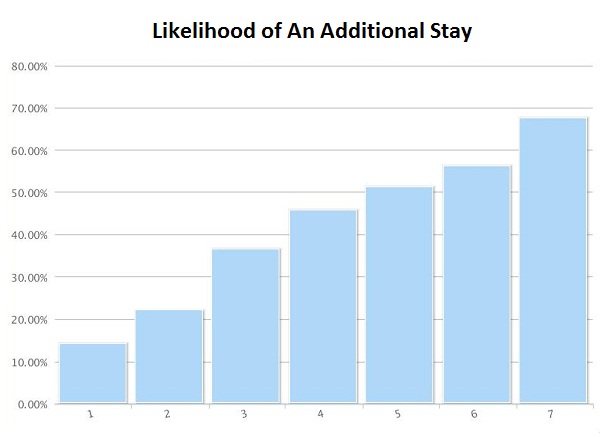Airbnb is one of the hottest sites on the internet. The Y Combinator graduate has raised $120 Million of funding to change the way people find places to stay around the globe.
As fans of Airbnb with a passion for startup data, we decided to try and learn more about the site’s user base by looking at the publicly-available profiles of its members. We sampled just over 60,000 users and were able to draw some interesting insights using an RJMetrics business intelligence dashboard.
Some highlights include:
- Airbnb has over 2.1 million registered users and is growing about 250% year-over-year. At this rate, they’ll have 3 million users by the end of June and 4 million by the end of August.
- Almost 85% of Airbnb’s userbase has never received a review as a host or a guest. Our sample suggests that there may be as few as 350,000 reviewed users among the userbase of over 2 million.
- Usage is addictive — with each additional stay booked through Airbnb, users become increasingly likely to book again.
User Growth
Since Airbnb uses auto-incrementing IDs for its users and does not appear to have skipped any range of ID values, it is quite easy to track user growth over time.
Airbnb has very seasonal growth patterns, with most new users signing up in the summer (peaking in August) and significantly fewer signing up in the winter months (reaching a low point in December). These user analytics were easily extracted using RJMetrics.
The current user count is approximately 2.1 million.
For the past several months, the year-over-year growth rate has been steady at around 250%. Extrapolating this out for the rest of the year puts the site’s user count at over 3 million by the end of June and over 4 million by the end of August. At its current growth rate, the site will approach 6 million registered users by the end of 2012.
Usage
Since we didn’t have direct access to data on actual stays, we used reviews as a proxy for activity. Reviews are the lifeblood of the Airbnb community, so we think it’s fair to assume that the number of reviews is a good proxy for the number of stays.
Most sites we study show signs of the “80/20 rule,” which suggests that 80% of the activity comes from 20% of the users. In Airbnb’s case, it’s more like the “100/20” rule — only 16% of the user base has been reviewed as a host or a guest.
Here are some other usage statistics:
Only about 14% of users (or about 300,000 users) have been reviewed as guests.
Only about 2.3% of users (or about 50,000 users) have been reviewed as hosts.
A mere 0.5% of the userbase has been reviewed as both guest and host.
5% of users (or about 100,000 users) have active listings, but only 2% (or about 40,000 users) have received reviews from guests. This suggests that more than half of the people listing properties have yet to host a guest.
Repeat Activity
By relying on the same techniques we use to track repeat purchase probability in RJMetrics, we were able to profile the average user’s likelihood of using Airbnb with each additional stay.
As you can see, while only about 14% of the userbase ever books a stay (as indicated by a first review from a host), 22% of those users who book once go on book a second stay via Airbnb. By the time a user has booked five stays, the likelihood that they will book another stay on Airbnb is over 50%.
Note that these percentages are based on the behavior of the existing user population, the majority of which has been registered for less than a year. Since so many users have a limited history on the site, it’s quite likely that these numbers will increase over time.
Conclusion
Airbnb continues to explode in popularity and experience tremendous user growth as a result. As with most consumer sites, however, the population of active users is much smaller than the total registered user count.
Airbnb’s key to continued success will be to both grow its user base and convert more of its registered users into paying customers. As we’ve seen, with each additional booking users become more likely to book again.
Click here to use RJMetrics to draw actionable insights from your company’s data.


